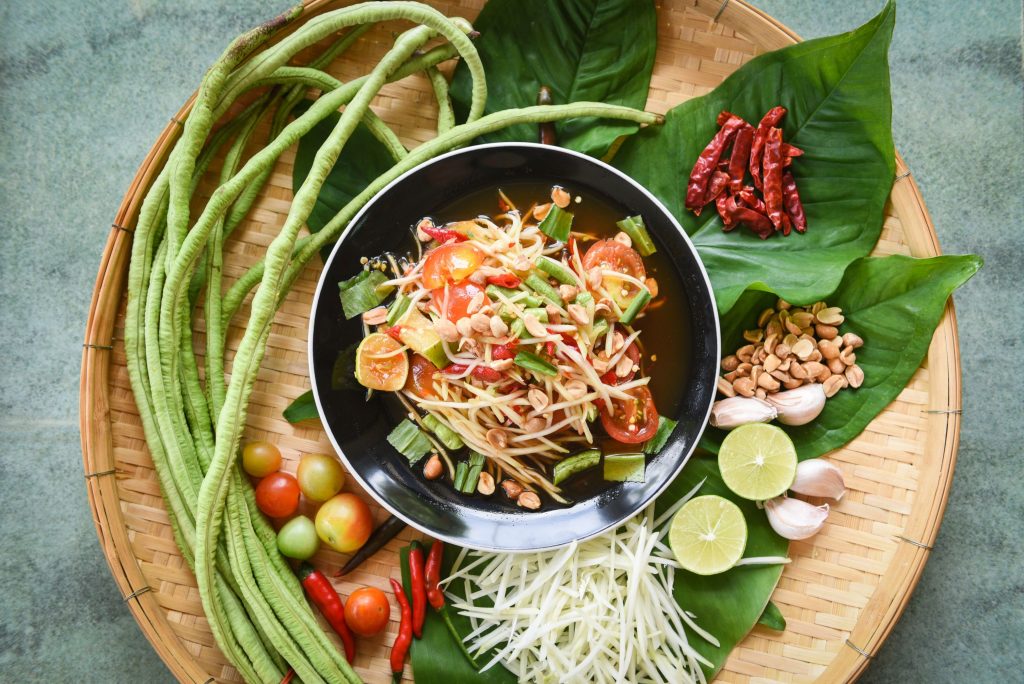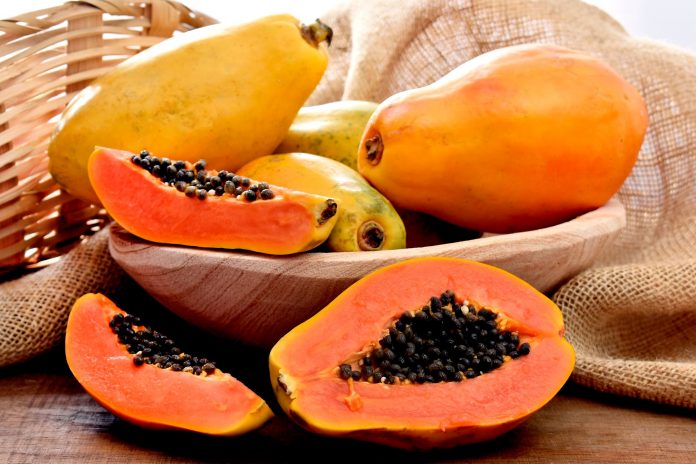A medium-sized papaya contains more than 200% of the vitamin C you need per day, helping to reduce the risk of heart disease and boost the immune system
Carica papaya is the scientific name of the orange and green fruit known more commonly as papaya. Orange papayas taste sweet and have a soft texture that many find appealing. The seeds though edible are exceedingly bitter.
The cultivation of papaya began in Southern Mexico and Costa Rica where indigenous people in the area ate papayas and used them for medicinal purposes. In the 1500s and 1600s, Spanish and Portuguese colonisers brought the seeds to other tropical areas of the globe, including the Philippines and India.
Today, the total production of papaya in the world is estimated to be 6 million tons per year. With an annual output of 3 million tons, India is the largest producer of papaya contributing to almost 50% of the world’s total papaya production.
The papaya season varies from country to country. In India it is from August to November. However, papayas are cultivated throughout the year in the states of Karnataka, Maharashtra, Andhra Pradesh, Madhya Pradesh, Gujarat. Globally, Mexico, Brazil, Nigeria, China, Peru, Thailand, and the Philippines are the major producers of papaya.
Here’s why papaya is excellent for your health:
A medium-sized papaya contains more than 200% of the vitamin C you need per day, helping to reduce the risk of heart disease and boost the immune system.
Protection of heart health
Papayas contain high levels of antioxidants, Vitamin A, C and E. Diets high in antioxidants may reduce the risk of heart disease. When cholesterol oxidises, it’s more likely to create blockages that lead to heart disease. Antioxidants prevent the oxidation of cholesterol.
Additionally, papaya’s high fibre content may reduce the risk of heart disease.
Digestion and reduced inflammation
The papaya fruit contains two enzymes, papain and chymopapain. Both enzymes digest proteins, meaning they can help with digestion and reduce inflammation. Papain is an ingredient in some over-the-counter digestive supplements to help with minor upset stomach.
Both papain and chymopapain also help to reduce inflammation. They may help acute pain, like those from burns or bruises, and they can help with chronic inflammatory conditions like arthritis and asthma.
Boost to the Immune System
Eating foods high in vitamin C can help to boost the immune system, allowing the body to fight off bacterial and viral illnesses. Papaya has a good amount of this antioxidant, making it part of an immune-healthy diet.
Papaya is a good source of Vitamin A, another important vitamin for a healthy and functional immune system.
Potentially protects against prostate cancer
Lycopene is a natural pigment found in foods that are red or orange. Tomatoes, watermelon, and papaya are good sources of lycopene. Some experts believe that eating more lycopene reduces the risk of prostate cancer, but some studies have been inconclusive.
However, in other studies, eating a diet high in lycopene along with green tea reduced the risk of prostate cancer significantly.
Things to Watch Out For
Papaya is generally safe to consume, but some people may experience an allergic reaction. Papaya has natural sugars, so if you need to avoid sugar for any reason, eat a moderate amount that fits with your health needs.
How to choose a Papaya
When choosing a papaya, consider when and how you want to eat it. Green papayas are not ripe yet and will not have the characteristic flavour or texture of unripe papayas used typically in som tan (Thai salad) and other cooked dishes. Papayas with an orange skin are riper. You want it to be slightly soft to the touch, but not overly soft.
If you do buy unripened papayas, store them at room temperature and wrap them in a newspaper to allow them to ripen before consuming.
Once you are ready to eat the papaya, simply cut it open, scoop out the seeds, and eat the orange interior. The skin and seeds are not poisonous, but most people do not eat them.
Many people squeeze a bit of fresh lemon on to their papaya to balance the acidic content and sweetness.
Green Papayas
Here’s a bit of information on green papaya. Green papaya flesh is crisp, white with pale green edging, and dense with a central seed cavity filled with white pith and many inedible seeds.
Green papayas are crunchy with a very mild and neutral taste similar to the flavour of cucumber. They are favoured for their crisp texture, fast-growing nature, and neutral flavor allowing it to pair well with stronger spices and flavours in culinary applications. Green papayas are available year-round in tropical climates.
Green papayas are a good source of vitamins A and C and also contain folate, magnesium, manganese, and potassium.
The unripe fruits will keep for a couple of days at room temperature but will then begin to ripen. Once ripe, papayas will keep up to one week when stored in the refrigerator.

Cooking with green papaya
Green papayas are best suited for both raw and cooked applications such as boiling or sautéing. In Thailand, the fruits are most well-known for their use in som tan, which is a Thai salad that mixes Green papaya with fish sauce, lime, chilli, garlic, and varying vegetables. Green papaya can also be added to stews, pickled for extended use, grated, fried, and mixed with small shrimp to make okoy, or cooked into sour curries such as gaeng som. Green papaya is also blended into soups and pairs well with lemon, long beans, carrots, daikon radish, chillies, cherry tomatoes, cilantro, green onions, shallots, turmeric, and peanuts.








